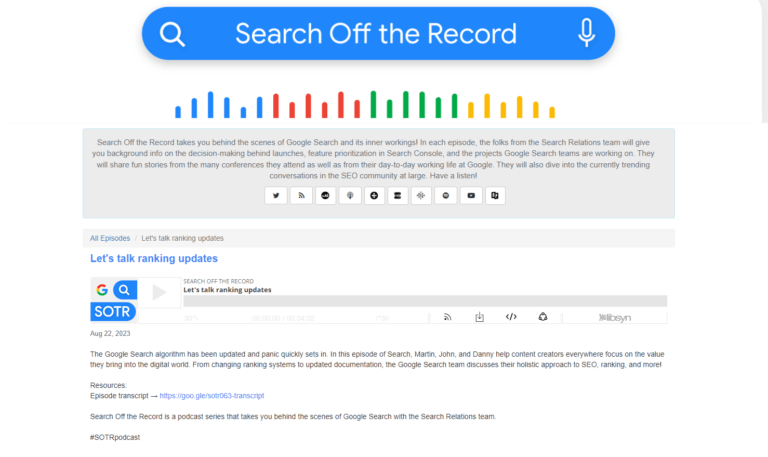Success of Your New Website
There are many reasons why you might be considering building a new website for your business. Maybe you’ve outgrown the old one, or perhaps it’s just not pulling in enough leads to make it worth continuing to pay for hosting and updates.
Whatever the reason is, you’re ready to take the plunge on a new site. You are finally taking the leap into the digital world and starting up that website that has been in the works for months. But how do you know if this investment was successful? What metrics can you measure that indicates that your new website is doing what it should be doing?
Metrics to consider when measuring the success of your site
Measuring the success of your new website is not all about the color, texture, fonts size, or graphics. Instead, you utilize data and analytics to analyze your new website’s success. Here are a few metrics to check:
- The number of visitors
A key metric to check is the number of visitors your site receives each month. Getting people to come to your site is always the first step. Monitor traffic spikes or sudden drops. If you see a significant increase, you’ll want to know where it came from. If you notice a huge drop in visitors, you should try to determine what caused it as fast as possible.
You should also take a look at how your visitors reach your site. Which source are they using? Do they find your site via Google organic search, social networking channels, or through a referral link?
Website visitors’ traffic sources, sometimes called traffic channels, allow you to see where they come from, which include:
- Organic search traffic
- Direct traffic
- Referral traffic
- Email traffic
- Paid search traffic
When you don’t get a lot of return visitors, you can:
- Create contents and videos that are more engaging
- Make your ad campaigns more effective by choosing a better demographic.
- Enhance your product pages with better copy, more attractive images, and videos
- Add more products to your store
- Time spent on page
The next metric you want to consider is the average time each visitor spent on your website. How long are your visitors hanging out on your pages? Is it long enough to convey your message?
You may have informative videos on your website and want your visitors to watch them. Maybe some informative blogs for them to read.
Why does it matter? It measures how engaged a user is. Visitors who stay on your website longer indicate interest in your content. It means that visitors are finding what they are looking for. When they dive deep into your content, they are more likely to become acquainted, like, and trust your firm. They are more likely to buy your product or acquire the services you offer.
- Bounce rate
We see it all the time. Someone finds your website via a search engine like Google. When they visit the site, they find that it lacks information, products, or services they are searching for. Perhaps they just see the site as boring. Then, after browsing for just a few seconds, they click the back button.
You call this a bounced visitor. A bounce rate is the ratio of total visitors to those who left after visiting a site.
High bounce rates can negatively impact the SEO ranking of your website and make it appear in search results lower, resulting in a drop in traffic.
If this is the case, you can find out exactly which pages on your website have a high bounce rate by going to your Google Analytics page. There are two things you can do to improve bounce rate:
- Improve the content on your website so that new visitors are engaged and stay longer.
- Refine your audience targeting so that your website attracts more visitors interested in the products and services you offer.
- Conversion rate
You may already be familiar with this metric. There are, however, many types of conversion rates. The site-wide conversion rate measures the performance of the entire website. Good sites can convert at 2% or higher, usually plus 1%.
Conversion rates also apply to landing pages. Landing page conversion rates typically range from 20% to 40%. They are higher because they are collecting visitors who arrive with particular goals.
You should also look for quick wins that drive additional marketing qualified leads from these pages. Making a few simple changes to these pages can help you generate a lot of new leads.
- Calls-to-action (CTAs) Click-Through Rate (CTR)
Every website should include calls-to-action (CTAs). You must direct the visitor to the next step like adding to the cart, downloading now, or viewing more. If your visitors are not clicking the CTAs, you must make changes to take the next step towards becoming customers.
- Device source
It’s another metric to consider. You can use it to find out what type of device is being used to access your websites, like smartphones, PC, or tablets. You can also view the top operating systems like Android, iOS, or Windows and top browsers Safari, Chrome, and Firefox used to render your site.
By understanding this, you will optimize your website for the type of device it’s being accessed from. You can adjust the design and content of your site so that it looks great on the devices most people use to access it. You might also find device source data helpful when creating ad campaigns.
Having a successful website is essential. You worked hard to make it and want others to enjoy and engage with it. But success isn’t a one-size-fits-all measurement. There are many factors to consider, such as the size of your website, how long it has been live, and a lot more. So, do not get discouraged if you don’t see the web traffic or other KPIs you’d like right away. Instead, consider the data and look for areas for improvement; you’ll likely be pleasantly surprised by the results.





